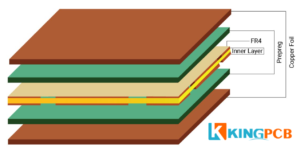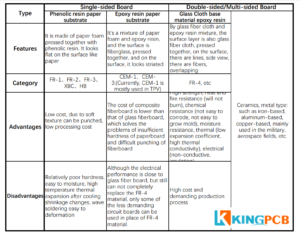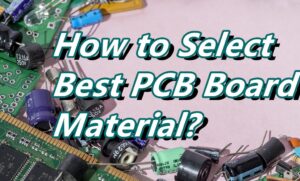How to Select Best PCB Board Material?
2022-08-16Before learning about the PCB board materials we first know what is PCB. Also PCB is the Printed Circuit Board abbreviation. The main function is to support the circuit components.
1. CCL
Copper Clad Laminate as a printed circuit board manufacturing substrate material. It is the electronic glass fabric or other reinforcing materials dipped in resin.
One or both sides covered with copper foil and heated and made of board material. CCL conducts, insulates and supports the interconnection of printed circuit boards. Copper laminate has a great impact on the transmission speed of signals in the circuit, energy loss, and characteristic resistance. Where copper foils are in multilayer board production, they are also available as cores.
CCL are divided into two categories, namely, rigid and flexible
2. Copper Foil
Copper foil is a cathodic electrolytic material. A thin, continuous metal foil deposit on the substrate layer of the circuit board acts as the conductor of the PCB.
The thickness of copper foil is normally in oz. 1 oz of copper is the thickness of copper foil spread evenly and flatly over a square foot area and is equal to 1.37 mil or 35 μm.
Common standards for copper foil are: 12μm (1/3oz), 18μm (Hoz), 35μm (1oz), and 70μm (2oz)
3. Preprag
Preprag is one of the main materials in the production of multilayer boards, consisting mainly of resin and reinforcing material, and multilayer printed boards use glass fiber as reinforcing material.

The parameters of common PCB materials mean
94HB: ordinary cardboard, not fire-resistant (the lowest grade material, die-punched, can not do the power board)
94V0: fire-retardant cardboard (die-punched)
22F: single-sided half glass fiber board (die-punched)
CEM-1: single-sided fiberglass board (must be computer-drilled, cannot be die-punched)
CEM-3: double-sided half glass fiber board (in addition to double-sided cardboard belongs to the lowest end of the double-sided board material)
FR-4: Double-sided fiberglass board
Halogen: contains fluorine, bromine, iodine, and other elements
Tg: glass transition temperature, i.e. melting point. The general TG is 130 degrees or more, high Tg is generally greater than 170 degrees, and medium Tg is about greater than 150 degrees

The main standards for substrate materials are as follows:
1. Chinese standards: China's national standards for substrate materials are GB/T4721-47221992 and GB4723-4725-1992, and the standard for copper-clad foil boards in Taiwan, China, is the CNS standard, which is modeled on the Japanese JIS standard and was released in 1983.
2. International standards: JIS standard of Japan, ASTM, NEMA, MIL, IPC, ANSI, UL standard of USA, Bs standard of UK, DIN, VDE standard of Germany, NFC, UTE standard of France, CSA standard of Canada, AS standard of Australia, FOCT standard of former the Soviet Union, IEC standard of international, etc.
In addition, when selecting the best circuit board materials, KingPCB is an industry leader in quick turnkey PCB manufacturing. KingPCB offers rigid, flexible, and custom circuit board material options.
About KingPCB's custom PCB manufacturing services
- Fast quotation within 24 hours
- Professional engineering team
- One-stop component sourcing service to reduce delivery time
- Perform multiple checks expecially during the assembly process to ensure the quality of prototyped PCBs
- Provide turnkey service from production to assembly
Contact us today to get more information and fast quotation soon.




